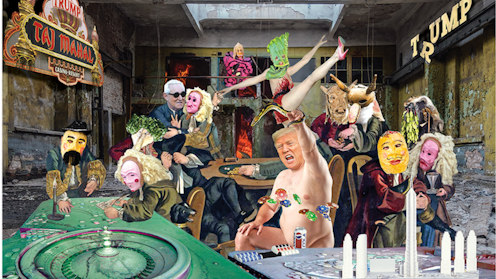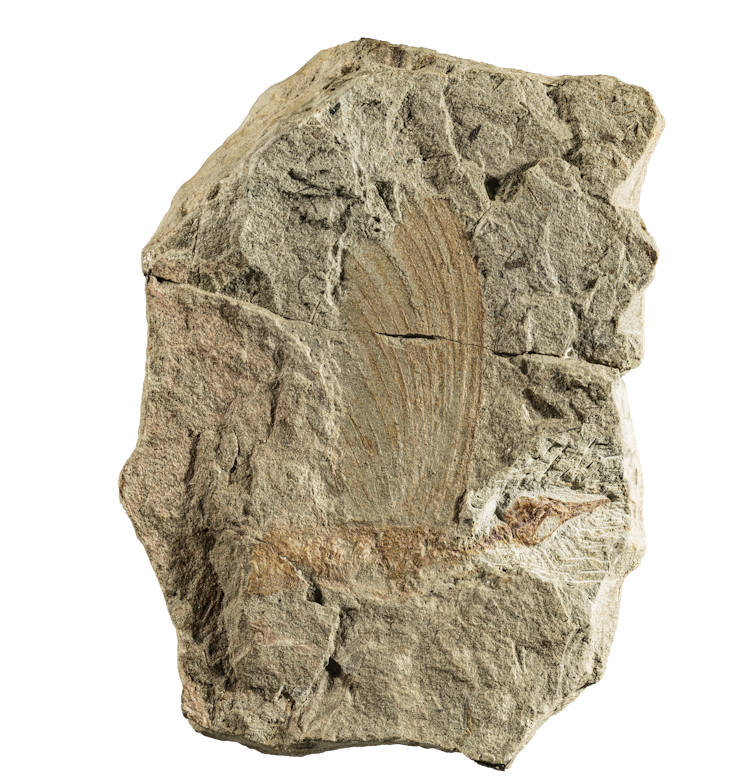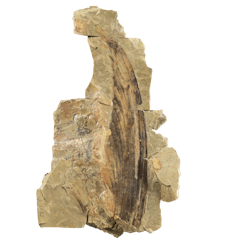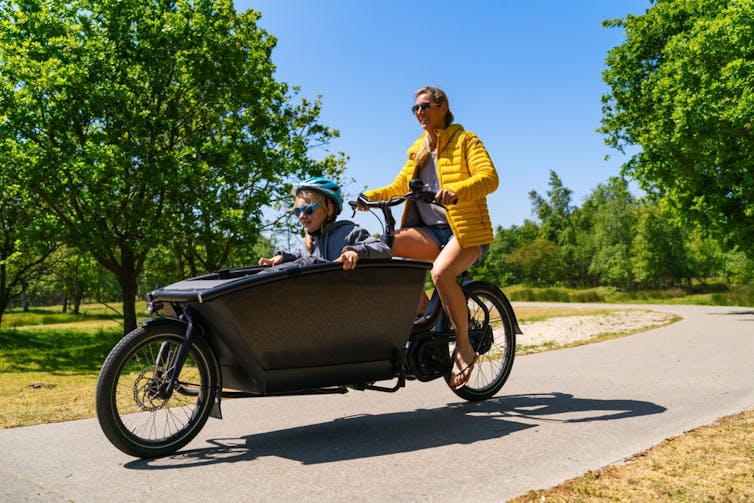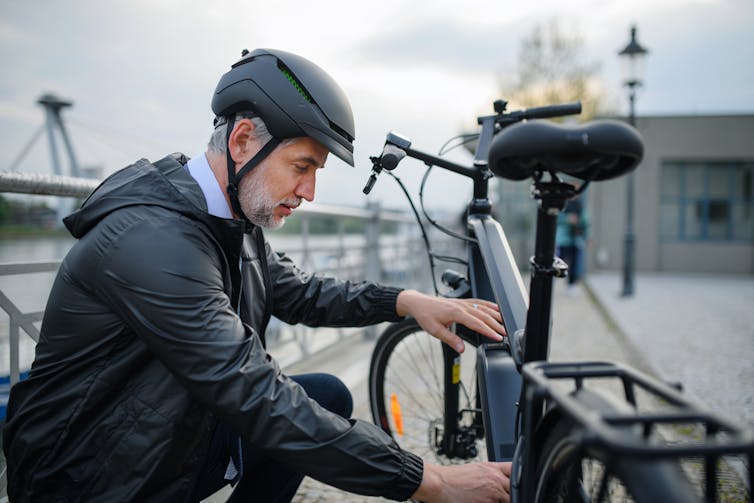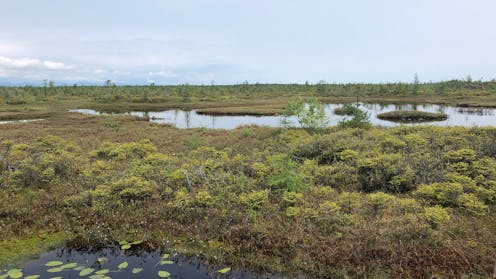Source: The Conversation – USA – By Cassandra Burke Robertson, Professor of Law and Director of the Center for Professional Ethics, Case Western Reserve University

Something unusual is happening in U.S. immigration courts. Government lawyers are refusing to give their names during public hearings.
In June 2025, Immigration Judge ShaSha Xu in New York City reportedly told lawyers in her courtroom: “We’re not really doing names publicly.” Only the government lawyers’ names were hidden – the immigrants’ attorneys had to give their names as usual. Xu cited privacy concerns, saying, “Things lately have changed.”
When one immigration lawyer objected that the court record would be incomplete without the government attorney’s name, Xu reportedly refused to provide it. In another case, New York immigration Judge James McCarthy in July referred to the U.S. Immigration and Customs Enforcement, or ICE, attorney as merely “Department” throughout the hearing.
New York immigration Judge Shirley Lazare-Raphael told The Intercept that some ICE attorneys believe it is “dangerous to state their names publicly.” This follows a broader pattern of ICE agents wearing masks during arrests to hide their identities.
This secrecy violates a fundamental principle that has protected Americans for centuries: open courts. Here’s how those courts operate and why the principle governing them matters.

AP Photo/Olga Fedorova
‘Presumption of openness’
The U.S. legal system is built on openness, with multiple layers of legal protection that guarantee public access to court proceedings.
This tradition of open courts developed as a direct rejection of secret judicial proceedings that had been used to abuse power in England. The notorious Star Chamber operated in secret from the 15th to 17th centuries, initially trying people “too powerful to be brought before ordinary common-law courts.”
But the Star Chamber eventually became a tool of oppression, using torture to obtain confessions and punishing jurors who ruled against the Crown. Parliament abolished it in 1641 after widespread abuses.
By the time American colonial courts were established, the reaction against the Star Chamber had already shaped English legal thinking toward openness. American courts adopted this principle of transparency from the beginning, rejecting the secretive proceedings that had enabled abuse.
Today, the term “star chamber” refers to any secret court proceeding that seems grossly unfair or is used to persecute individuals.
In the U.S., courts have repeatedly emphasized that “justice faces its gravest threat when courts dispense it secretly.” The First Amendment gives the public a right to observe judicial proceedings. The Supreme Court has ruled that “a presumption of openness inheres in the very nature of a criminal trial under our system of justice.”
Every federal appeals court has recognized that this constitutional right extends to civil cases too, with some exceptions such as protecting “the parties’ privacy, confidential business information, or trade secrets.” Federal court rules require that trials be “conducted in open court” and that witness testimony be “taken in open court unless otherwise provided.”
Many state constitutions also guarantee open courts – such as Oregon’s mandate that “no court shall be secret.”
While there’s no explicit law requiring attorneys to be publicly named, there’s also no policy allowing their names to be kept secret. The presumption is always toward openness.
In response to these recent developments, law professor Elissa Steglich said that she’d “never heard of someone in open court not being identified,” and that failing to identify an attorney could impair accountability “if there are unethical or professional concerns.”
Rules for anonymity
Courts sometimes allow anonymity, but only in specific circumstances.
Juries can be anonymous when there’s “substantial danger of harm or undue influence,” as legal expert Michael Crowell writes – like in high-profile organized crime cases or when defendants have tried to intimidate witnesses before. Even then, the lawyers still know the jurors’ names.
Similarly, parties to a lawsuit can sometimes use pseudonyms like “Jane Doe” when the case involves highly sensitive matters such as sexual abuse, or when there’s a real risk of physical retaliation.
But these rare exceptions require careful court review.
What’s happening with ICE attorneys is different. There’s no formal court ruling allowing it, no specific safety findings and no established legal process.
Immigration courts have fewer protections
Immigration courts operate differently from regular federal courts. They are so-called “administrative courts” that are part of the executive branch, not the judicial branch.
These courts decide claims involving an individual’s right to stay in the U.S., either when the government seeks to remove someone from the country for violating immigration law or when an individual seeks to stay in the country through the asylum process.
Immigration judges lack the lifetime job protections that regular federal judges have. As executive branch government employees, they can be hired and fired, just like other Department of Justice employees.
People in immigration court also have fewer procedural protections than criminal defendants. They have no right to court-appointed counsel and must represent themselves unless they can afford to hire an attorney. The majority of immigrants appear without an attorney. Outcomes are better for those who can afford to hire counsel.
Immigration court records are also less accessible to the public than other federal court proceedings.
For years, the Board of Immigration Appeals, the nation’s highest immigration court, made less than 1% of its opinions publicly available. A federal court ruled that public disclosure was required; the Board of Immigration Appeals now posts its decisions online.
However, lower immigration court decisions are rarely made public.
Because immigration courts operate with less oversight than regular federal courts, public observation becomes more critical.
Open courts aren’t just about legal procedure – they’re about democracy itself. When the public can observe how justice is administered, it builds confidence that the system is fair.

Michael M. Santiago/Getty Images
Court watching protects transparency
Court watching has become an important way for citizens to ensure due process is honored, especially in immigration cases.
Observers can monitor whether proper legal procedures are being followed. They can watch for signs that attorneys are prepared, treating people respectfully and following court rules – regardless of whether those attorneys identify themselves.
Observers help track trends such as lack of legal representation, language barriers or procedural unfairness that can inform advocacy for reforms. This kind of public oversight is especially important in immigration court, where people often don’t have lawyers and may not understand their rights.
When community members bear witness to these proceedings, it helps ensure the system operates fairly and transparently.
Professional ethics and accountability
As a law professor who runs a law school’s Center for Professional Ethics, I can say that while there’s no specific law forcing ICE attorneys to identify themselves, they are still bound by rules of professional conduct that require accountability and transparency.
State bar associations have clear standards about attorney conduct in court proceedings. The American Bar Association’s Model Rules of Professional Conduct emphasize that lawyers are “officers of the legal system” with duties to uphold its integrity.
Immigration judges, despite being government employees rather than lifetime-tenured federal judges, are also bound by judicial conduct codes that require them to uphold public confidence in the justice system. When judges allow or encourage anonymity without formal procedures or safety findings, they risk violating these ethical obligations.
Bar associations can investigate professional conduct violations and impose sanctions ranging from reprimands to suspension or disbarment. While enforcement against federal government lawyers has historically been uncommon, sustained documentation by court observers can provide the evidence needed for formal complaints.
While government attorneys, judges and other court personnel may face real safety concerns, hiding their identities in open court is unprecedented and breaks with centuries of legal tradition that requires accountability and transparency in our justice system.
As pressure mounts to process immigration cases quickly, courts are ethically and legally bound to ensure that speed doesn’t come at the expense of fundamental fairness and transparency.
![]()
Cassandra Burke Robertson does not work for, consult, own shares in or receive funding from any company or organization that would benefit from this article, and has disclosed no relevant affiliations beyond their academic appointment.
– ref. Immigration courts hiding the names of ICE lawyers goes against centuries of precedent and legal ethics requiring transparency in courts – https://theconversation.com/immigration-courts-hiding-the-names-of-ice-lawyers-goes-against-centuries-of-precedent-and-legal-ethics-requiring-transparency-in-courts-261452


